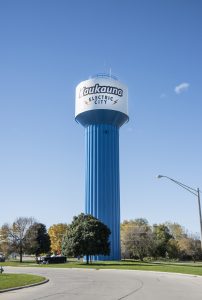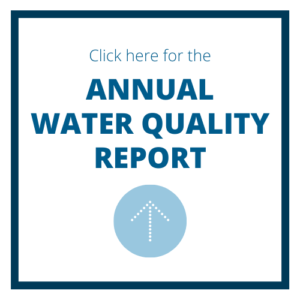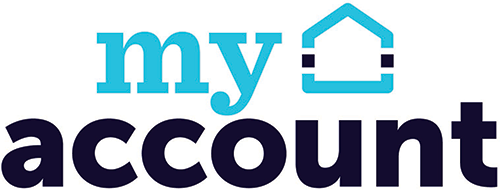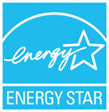
Click here for more information on the Reverse Osmosis Project.
Information below includes:
Kaukauna Utilities (KU) Water Department serves residents and businesses within the City of Kaukauna – approximately 7,000 customers. We have over 100 miles of water mains throughout our service territory, pulling from five (5) wells. 1,000,000 gallons of water are pumped through the distribution system daily. In total, there are three (3) Iron Removal Filter Plants. There are two (2) water towers that hold 500,000 gallons each – one on the south side of the city (between Tanner and Quinney schools) and one on the north side (near HWY 41).
Over the past 110 years, KU has worked hard to produce drinking water that meets or exceeds all state and federal drinking water standards. We continually strive to adopt new and better methods for delivering the best quality drinking water to you. As new challenges to drinking water safety emerge, we remain vigilant in meeting the challenges of source water protection, water conservation, and community education, while continuing to serve the needs of all our water users.
KU is committed to providing safe, reliable, and affordable water and electricity for its customers. Please see our Frequently Asked Questions below. If you have other questions or issues, please give us a call at 920-766-5721.
Lead Service Line Removal
At Kaukauna Utilities (KU), we ensure that our drinking water meets or exceeds all federal and state standards when it leaves our filtration plants. However, lead can still enter the water through corrosion of lead service lines, pipes, and plumbing fixtures.
Our Lead Testing and Corrosion Control
Since 1992, we have been testing water for lead at various locations in our distribution system. These tests consistently show lead levels below regulatory limits. To further protect our customers, we introduced a new corrosion control method in 2022, reducing the corrosion of lead and copper pipes throughout our water system.
Lead Service Line Replacement Program
Over the past five years, KU has actively worked to remove both public and private lead service lines, aiming to have all lines lead-free by the end of 2028. Here’s how the service lines are categorized:
- Public Service Lines: These are the sections from the water main to the curb stop and are owned and funded by KU.
- Private Service Lines: These run from the curb stop to the water meter and are the property owner’s responsibility.
Regulatory Compliance and Service Line Inventory
In 2024, new federal and state regulations required all water utilities to identify the materials of service lines for each service address. KU has completed this inventory and submitted it to the Wisconsin Department of Natural Resources. As of now, there are fewer than 360 public lead service lines and fewer than 230 private lead service lines in our system.
How to Access Information and Get Help
We are committed to transparency. Any member of the public can request a copy of our service line inventory. If you need help determining if you have a lead service line, please contact Kaukauna Utilities.
For more information or assistance, reach out to us at 920-766-5721. Your safety and the quality of your drinking water are our top priorities.
Water Department FAQ
+ Is KU water supply from groundwater or surface water?
KU water supply is from groundwater. But what’s the difference between groundwater and surface water?
Water supply for human consumption comes from two sources: groundwater and surface water. There are differences in surface water and groundwater quality. Each source of water has a unique set of contaminants and neither water source can ever be entirely free from water contaminants.
Groundwater is located underground in large aquifers and must be pumped out of the ground after drilling a deep well. Filtration through the soil helps clean groundwater. Groundwater is water contained in or by a subsurface layer of soil or rock.
According to the Wisconsin Department of Natural Resources (DNR), groundwater is the main source of water supply for about two-thirds of Wisconsin residents. It provides drinking water for a majority of the rural population who do not have access to public water-supply systems. Some major cities rely solely on groundwater for all their needs.
Surface water is found in lakes, rivers, and streams and is drawn into the public water supply by an intake. Surface water can be affected by numerous physical variables such as topography, land cover, soil conditions, mineralogy, and ground-water conditions, all of which may be affected by geologic conditions.
+ Is it ok for drinking water to have contaminants?
The Safe Drinking Water Act (SDWA) defines the term “contaminant” as meaning any physical, chemical, biological or radiological substance or matter in water. Therefore, the law defines “contaminant” very broadly as being anything other than water molecules. According to the EPA, drinking water may reasonably be expected to contain at least small amounts of contaminants and that some drinking water contaminants may be harmful if consumed at certain levels in drinking water while others may be harmless. The EPA states that the presence of contaminants does not necessarily indicate that the water poses a health risk.
+ Is KU water safe?
KU is a regulated Utility committed to working with, and complying to, all standards required by all state and federal agencies regarding water quality, as well as continuing to deliver safe and reliable water as we have for the past 110 years. KU meets or exceeds all contaminant level standards currently set by state and federal agencies and continues to make improvements to the water system when practicable.
While KU does have hard water, it is safe for consumption. According to the USGS, “the constituents that contribute to hardness (generally calcium and magnesium ions) are not toxic; that is, they do not cause harmful health effects.”
+ How often does KU test their water?
Testing of the KU water system is performed routinely by a state certified lab to verify the non-existence of bacteria and harmful contaminants. Fifteen samples a month are pulled from the DNR approved sample sites within the distribution system. For details on the results of the KU water testing, take a read through the annual water quality report, found here. Make sure to read the “table talk” section to best understand the results.
+ Where can I find the annual water quality reports?
Click here for the annual water reports.
+ Where can I go to read more about drinking water standards and regulations?
Public Service Commission of Wisconsin – WI Water Rates Dashboard
WI Department of Natural Resources (DNR) – Drinking Water System Portal
+ Why do I get white residue buildup on my faucets and fixtures?
The white residue that you see on your faucets and fixtures is calcium buildup (limescale). This happens with water that carries dissolved calcium salts (calcium carbonate or calcium bicarbonate). This is very common with hard water but is not harmful.
Hard water tends to leave this white residue not only on faucets and fixtures, but also on dishes and mechanical parts of water-using appliances (dishwashers, refrigerators, washers, etc.)
+ Why does my water sometimes smell?
KU water is treated with sodium hypochlorite (chlorine). That is the only smell you should get from our water. If you are getting a rotten or sewer smell when you turn your faucet on, that is from your drains and/or traps. If this happens, we suggest cleaning or disinfecting your drains and/or traps.
Chlorine is used in water treatment to kill parasites, bacteria, and viruses but does not cause harmful health effects.
+ What is Kaukauna’s ‘water hardness’?
KU water supply is obtained from deep underground wells. Well water, or groundwater, is usually hard water. The hardness is naturally occurring from weathering of limestone, sedimentary rock and calcium bearing minerals.
Our water contains 48 grains of hardness per gallon.
+ Since KU has hard water, are there any suggestions for maintaining appliances?
To help maintain appliances, routine care is key. We also suggest having a properly sized water softener for your household size (people). With questions, a licensed plumber or water softener company can assist. Otherwise, we always welcome questions or concerns – 920-858-9180.
+ What should I do if I have a lead water service or if I have lead piping in my home or business?
Please call our Water Superintendent at 920-858-9180 to get on our replacement list. If you are unaware if you have lead piping, we will send a representative out to inspect.
+ What are Perfluoroalkyl and Polyfluoroalkyl substances (PFAS)?
PFAS are a group of man-made chemicals that have been manufactured for more than 70 years. These chemicals have oil, stain, and water repellant properties that make them useful and highly desirable for various products/applications including food packaging, non-stick cookware, clothing, firefighting foam, and upholstery. The chemicals are persistent in the environment and do not readily break down. They are commonly referred to as “forever chemicals.” Useful information regarding PFAS chemicals can be found on the U.S. Environmental Protection Agency (USEPA) website here Per- and Polyfluoroalkyl Substances (PFAS) | US EPA or the Wisconsin Department of Natural Resources (WDNR) website here PFAS | Wisconsin DNR.
Several peer-reviewed scientific studies have shown that exposure to PFAS chemicals may lead to an increased risk for certain health conditions including cancer, thyroid disease, high blood pressure, and several other adverse conditions. Research is ongoing to better understand the levels of PFAS that contribute to these adverse health conditions. Additional information on the health impacts from PFAS chemicals can be found on the Wisconsin Department of Health Services website here Chemicals: Perfluoroalkyl and Polyfluoroalkyl (PFAS) Substances | Wisconsin Department of Health Services.
+ Does KU sample drinking water for PFAS?
In August 2022, the WDNR set a Maximum Contaminant Level (MCL) of 70 parts per trillion (ppt) for two common PFAS contaminants, Perfluorooctanoic Acid (PFOA) and Perfluorooctane Sulfonic Acid (PFOS). The MCL is the highest level of contaminant that is allowed in drinking water. The USEPA has not set an enforceable standard for PFAS contaminants but has developed health advisory levels for several PFAS contaminants that are lower than current laboratory detection technologies. Health advisory levels are part of the USEPA’s rule development process and subject to change as research about the specific health implications evolve.
As required by the WDNR, KU began sampling for PFAS substances in January 2023. The three system entry points were sampled for several PFAS chemicals including Perfluorooctanoic Acid (PFOA) and Perfluorooctane Sulfonic Acid (PFOS). Levels were below the laboratory detection limits in all samples collected for PFOA (less 0.48 ppt) and PFOS (less than 0.30 ppt). Below is a summary of the most recent PFAS samples collected from KU drinking water entry points.
| Sampling Location | Water Tested | Sampling Date | Method | Perfluorooctanoic Acid (PFOA)** | Perfluorooctane Sulfonic Acid (PFOS)** |
| Well #8 | System Entry Point (Drinking Water) | 1/18/2023 | EPA 537.1 | <0.47 ppt | <0.30 ppt |
| Well #9 | System Entry Point (Drinking Water) | 1/18/2023 | EPA 537.1 | <0.48 ppt | <0.30 ppt |
| Main Filter Plant* | System Entry Point (Drinking Water) | 1/25/2023 | EPA 537.1 | <0.48 ppt | <0.30 ppt |
*Main Filter Plant includes Wells #4, 5, and 10.
**The Maximum Contaminant Level (MCL) for PFOA and PFOS is 70 ppt
Subject to regulatory changes, KU will be required to collect drinking water samples for laboratory analysis of PFAS chemicals twice per year. As results are available, KU will update the summary table included above. KU strives to be transparent with all aspects of our drinking water system and will continue to work with the WDNR and USEPA to provide safe drinking water that meets all regulatory standards.
 Annual Water Quality Report
Annual Water Quality Report
The KU annual water quality report covers all testing performed between January 1 and December 31 and is published in July each year (covering the prior years testing results). Click here to view the 2024 report.
For more information about this report, or for any questions relating to your drinking water, please call the Water Department at (920) 858-9180.
ppm (part per million) ppb (part per billion) pCi/L (picoCuries per liter of air) The concentration of radon gas is not measured directly but rather by the radioactivity it produces. It is expressed in picoCuries per liter of air, or “pCi/L“. A Curie is a unit of radioactivity equivalent to 1 gram of radium and the prefix “pico” means a trillionth Range (Low to High) Maximum Contaminant Level (MCL) Maximum Contaminant Level Goal (MCLG) Maximum Residual Disinfectant Level (MRDL) Maximum Residual Disinfectant Level Goal (MRDLG)
+ Click here for definitions of terms used in the water report.
Parts per million, or milligrams per liter (mg/L). Compared to the volume in an Olympic-size swimming pool (660,000 gallons), the volume in 1 ¼ two-liter bottles (2 ½ liters) represents 1 part per million.
Parts per billion or micrograms per liter (µg/L). Compared to the volume in an Olympic-size swimming pool (660,000 gallons), the volume in ½ teaspoon represents 1 part per billion.
The highest and lowest concentrations found in KU water tested throughout 2019.
The highest level of a contaminant that is allowed in drinking water. MCLs are set as close to the MCLGs as feasible using the best available treatment technology.
The level of a contaminant in drinking water below which there is no known or expected risk to health. MCLGs allow for a margin of safety.
The highest level of a disinfectant allowed in drinking water. There is convincing evidence that addition of a disinfectant is necessary for control of microbial contaminants.
The level of a drinking water disinfectant below which there is no known or expected risk to health. MRDLGs do not reflect the benefits of the use of disinfectants to control microbial contaminants.
Past Reports
2023 Water Quality Report
2022 Water Quality Report
2021 Water Quality Report
2020 Water Quality Report
2019 Water Quality Report
2018 Water Quality Report
2017 Water Quality Report
2016 Water Quality Report






